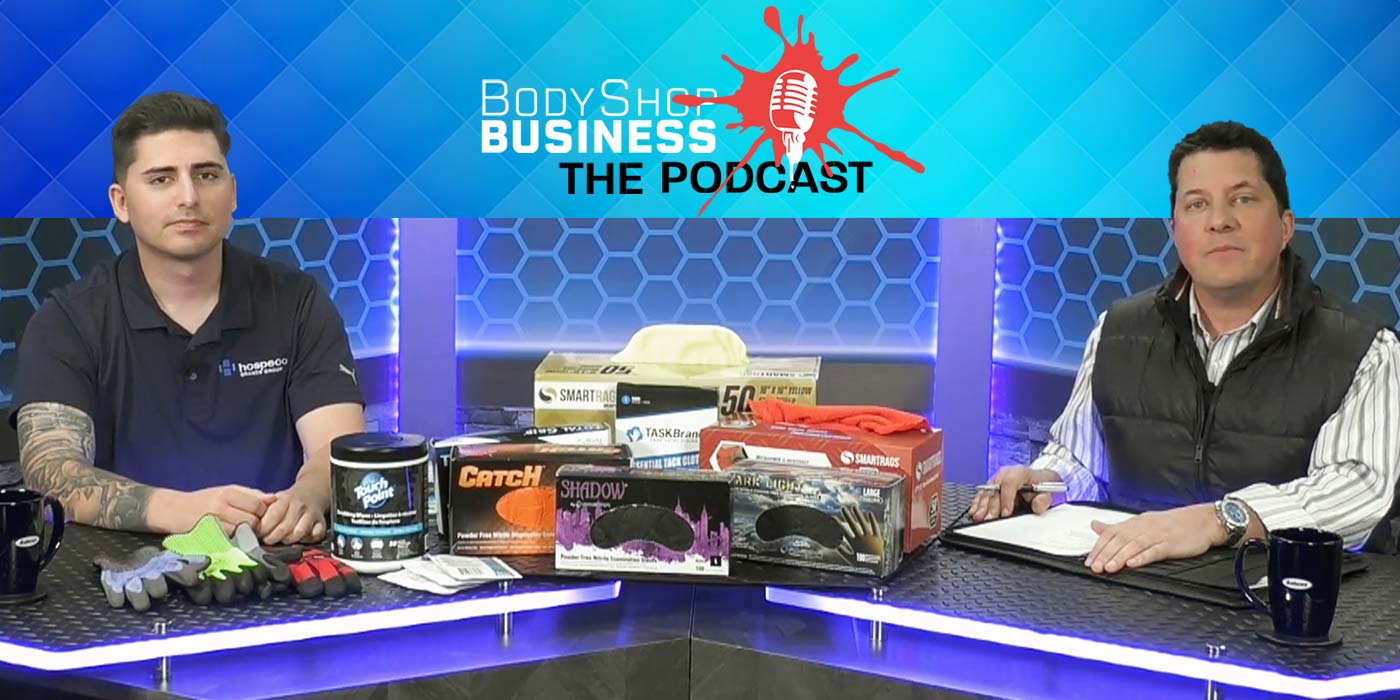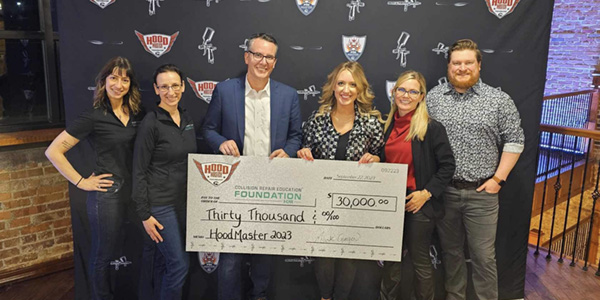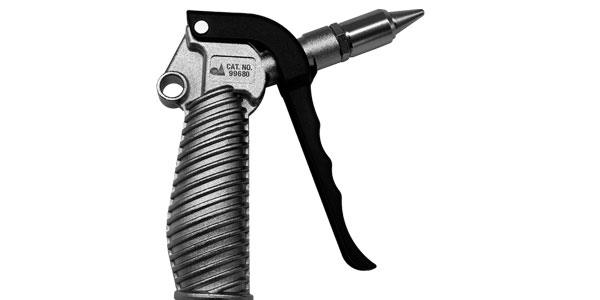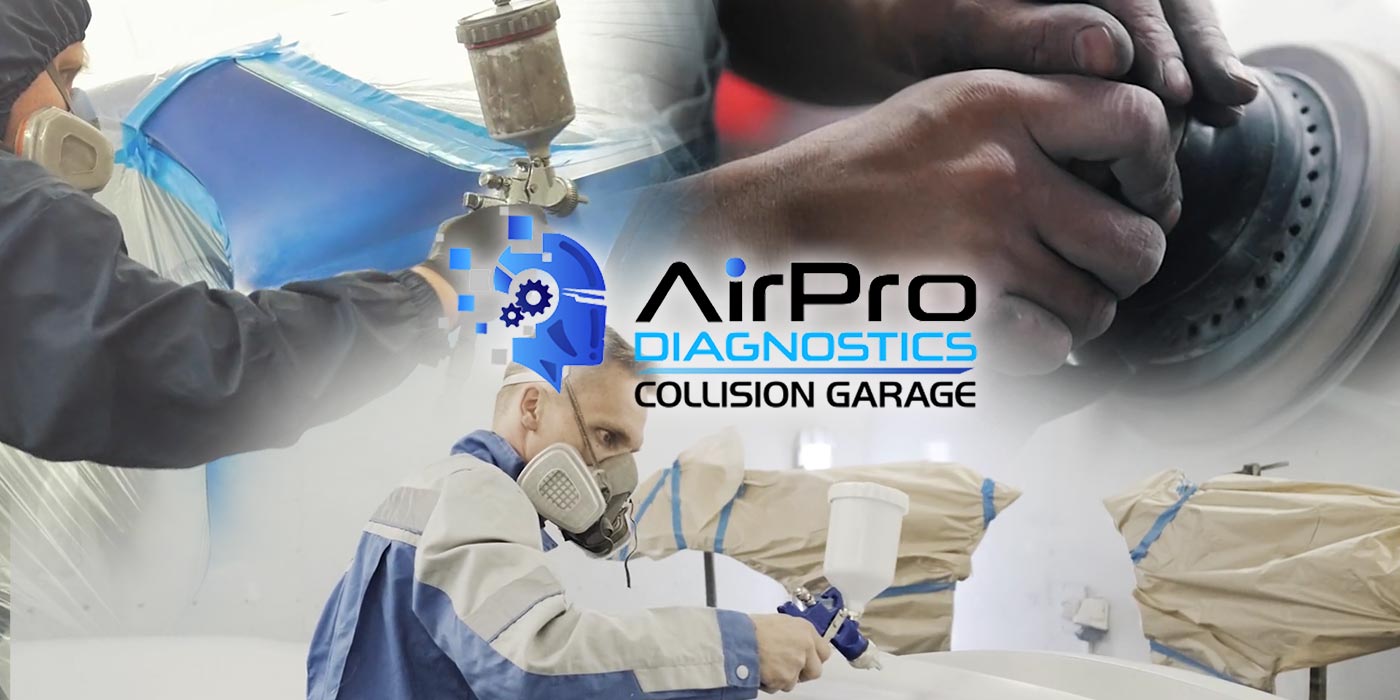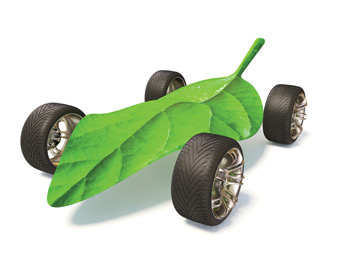 What every paint manufacturer has in common is the quest to create a perfect color match.
What every paint manufacturer has in common is the quest to create a perfect color match.
“Frankly, color match is our business – that’s what we sell,” says Harry Christman, marketing manager for Axalta Coating Systems.
Meanwhile, this goal has expanded beyond color match in recent years with efforts to go “green” through R&D and product introductions featuring low-VOC solvent-based and waterborne systems that stand up to the National Rule. Change is scary, but technology is easing the pain.
“Shops are concerned about getting a product that will provide the same color and [drying] speed they’re used to in order to stay productive,” says Louisa Meijer, global product manager at
Sherwin-Williams Automotive Finishes.
Compliance, conversion, cost – these factors roll around in shop owners’ heads when considering a switch from the National Rule to new low-VOC formulations that meet environmental mandates.
Several factors make compliance less of a headache and an expense for body shops. Waterborne conversion training and a range of equipment (suiting various budgets) to support this process gives shops choices should they opt to switch over to water. Low-VOC solvent-based paints meet regulated states’ requirements while giving shops a “drop in” technology. All they’ve got to do is switch paint types.
“We look at a product like [our low-VOC solvent-based paint] as giving shops a new lease on life because they can put this product in without increasing their costs or investing, and then when regulations come, they’re compliant,” Christman says.
The regulations aren’t going anywhere. Today, the EPA-mandated level of VOCs allowed in paint products such as a basecoat is 3.5 pounds per gallon. “There are many ways to get there,” Christman says of the techniques formulators use to reduce solvents in low-VOC “overs” and “unders” (primers, basecoats, clear-coats). Some manufacturers are relying on a handful of exempt solvents; others use resins to control the way paint behaves while meeting the 3.5 VOC limit.
“The low-VOC solvent-borne products provide a bit of a bridge so shops can dip their feet into the technology,” says Mike Carroll, new products introduction manager at BASF. “It gets shops into a more modern paint system with better color matches and newer technology.”
And, there’s not a great deal of commitment involved with using a low-VOC solvent-based paint. You purchase the product and substitute it for the National Rule formulations you’ve been using.
Meanwhile, waterborne has grown significantly more sophisticated since the first generation systems were introduced when California adopted Clean Air Act regulations. And, Meijer reminds, not all waterborne systems are created equal. “What they have in common is water [acting as a solvent],” she says.
The good news for shop owners: There are lots of options if you want to “clean up” your paint operation – an array of low-VOC solvent-based and waterborne systems. BodyShop Business spoke with a range of paint suppliers to find out what makes these products work, what to consider when converting and what’s on the horizon as the industry continues to develop smarter, safer ways to generate that coveted perfect color match.
Manipulating Paint Behavior
If you ask Axalta, here’s a lesson on what not to do when formulating alternatives to National Rule products: “Don’t attempt to make waterborne behave like solvent-based paint,” Christman says. This maxim defines their approach and R&D efforts.
Specifically, Christman is referring to the one and a half coat, wet-on-wet technology involved in the company’s waterborne paint system. “You don’t have to wait for one coat to dry before applying your next coat of paint,” he explains. “As soon as you’re done spraying the first coat, you can come back with your second, or ‘half coat.’ It’s a much faster way of painting and brings a lot of productivity to body shops.”
But, Christman admits, the “painful” part about waterborne for some shops is change. Enter Axalta’s brand-new low-VOC solvent-based option that acts like what painters are accustomed to with traditional paint. “There is no change in equipment or training required,” he says.
The problem is, low-VOC solvent basecoats have had a reputation for poor color match. While trying to meet the 3.5 limit, there are fewer solvents available to manipulate the paint’s properties, so in some cases the quality, finish or color can suffer. Also, low-VOC solvent-based paint can dry too fast, creating problems with paint setting up too quickly or dry spray during application, mainly in hot environments.
Axalta uses resins in combination with solvents to control the way its low-VOC paints behave, Christman says. “Resin is introduced into application binder (traditionally called the base maker) after you create the mixed color,” he says. “The application binder contains specific resins that are required by environmental conditions the painter is working in to create a paint that
behaves like what the painter is used to, but you get there a totally different way than with traditional paint.”
As for the future, Christman says “speed clears” providing high-gloss, fast-drying clearcoats are in development, as are UV curing paints using a new UV lamp Axalta introduced six months ago that works like a spray gun, emitting UV light and making primer ready to stand in 30 seconds.
Successful Conversion
Adapting to change is a real barrier to waterborne conversion, along with budgeting for equipment and infrastructural renovations to run a system: spray guns, spraybooths, blowers, etc. Not all shops have to start from scratch, but upgrades are generally required.
All this change can overwhelm shop owners – and discourage them from going waterborne. It doesn’t have to be that way. “We take our customers to one of our six training centers in the U.S., and one in Canada, and we spend a full day reviewing the products and doing demos to show them how the products spray and perform so they can get some hands-on experience as to what waterborne paint looks like,” Sherwin-Williams’ Meijer says.
With 190-plus Sherwin-Williams company stores staffed with knowledgeable representatives, no shop owner is alone during the conversion – and help is close by. “Our staff goes on site to shops and works through the conversion with them as they change over to waterborne products,” Meijer says.
Seeing is believing with waterborne. When shop owners experience the paint process and crunch the numbers – we’re talking productivity – they have a hard time discounting waterborne as a viable option. Plus, pigments are cleaner, Meijer says. “You get the sharp colors that are on vehicles today in the marketplace,” she says. “That is the reason that many OEMs that are producing vehicles today are on waterborne systems – because the color and coverage is that much better compared to solvent-based.”
More shops located in non-regulated states are moving to waterborne systems, Meijer says, crediting the cycle time for this switch. “Our HP Process with AIR-BAKE Technology allows a collision facility to go from prime to shine in 40 minutes or less,” she notes. “That is accomplished without turning on heat in the booth.”
Fewer Coats to Make a Match
With compliance top of mind among shop owners, switching to a low-VOC solvent-based product is a solution within reach, says Marcus Malnar, technical service supervisor for Transtar Autobody Technologies. “They don’t really have to change their processes,” he says.
Efficacy and Color Match
Transtar offers a no-mix product that does not require mechanical agitation, as most other basecoat systems do, Malnar says. “That is because of the resins we use with our binders,” he explains. “They keep the pigment evenly distributed throughout the toner.”
That way, when spraying the basecoat, metallic flakes are easily “oriented,” which can mean avoiding that extra coat to get the finish to lay down correctly, Malnar says. “There are more choices for shop owners today when choosing a low-VOC solvent-based product, and the products are getting better,” he says. “Since we’ve had more time to play with the exempt solvents that we have to work with, we’ve been able to come up with different combinations and more effective products.”
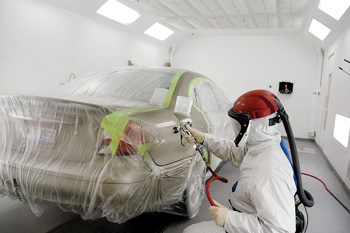 Color Match
Color Match
Using the latest European toner technology provides color match, coverage and performance at Automotive Art Group, which can match more than 150,000 colors using 58 toners. The company offers a low-VOC solvent basecoat system that meets mandates in California, Canada and other regulated states, says Dereck Foster, executive chairman.
“We are just about to launch our low-VOC HS Clear and Primer that will comply with regulations,” Foster says, noting that the company is now developing a waterborne color system it hopes to launch in early 2015.
“The transition from regular solvent to low-VOC is very easy,” Foster says. “It’s just a different system.”
Looking forward, future finishes will be more vibrant than those available today, Foster says. “They may even allow the car owner to change the color appearance of their car by simply turning a switch.”
Nanotechnology
The future of refinishes could lie in nanotechnology at BESA – Bernardo Ecenarro S.A., where R&D labs are focused on how nanotechnology can be applied to resins and additives. This technology could make paint products more resistant, says Amaia Mujika, marketing manager.
Meanwhile, BESA brings Euro technology to the U.S. with products like its ultra high solids acrylic clearcoat for bi-coat systems. “This product is one of the most sold clears in Europe and one of the top products in our product range,” Mujika says. “The primers and clears BESA offers in Europe and the U.S. are different formulations based on legislation. The company is one of Europe’s key manufacturers, and products have been adapted to the Canada/U.S. legislation, but always maintaining the quality standard of our entire product range.”
BESA is working toward waterborne because, “in Europe, it seems that the trends are water-based products,” Mujika says.
“In the U.S., we see that it’s possible to adapt solvent-based products to the current laws, and we’re working in this way,” she says. “If the legislation changes in the near future, becoming more restrictive, we’ll have to talk about water-based or UV technologies.
Coverage
Before selecting a low-VOC solvent-based product, shops should carefully evaluate product coverage, says Gina Mahan, North American marketing manager for Valspar Automotive. “Make sure you test [the paint] and be sure that it works for your shop,” she advises. “Low-VOC solvent systems are NOT all equal. You must look at the coverage and total cost. The Valspar Low-VOC solvent-based system allows you more flexibility than most. Most basecoat colors cover in three coats, and the ease of application versus other solvent systems is unmatched. This system allows you to make both 3.5-VOC basecoat, but also 2.8-single stage colors all off the same rack.”
Waterborne systems have evolved in recent years, and Valspar’s “true waterborne system” includes high-coverage toners, where R&D has been focused the last couple of years.
“What makes our waterborne system different in the market is a non-agitation system, so products can be stored on a standard shelf and do not require a mix machine,” Mahan says.
Adds Todd Everitt, Valspar Western Region technical manager, “A ‘true waterborne system’ is a latex-based paint line. Not all ‘water’ systems are the same. Water systems that require a mix machine to agitate the tints are solvent reduction water systems. The DeBeer 900 line requires no mixing machine for mixing. The high-strength pigment load allows colors to cover in two coats that can be applied in a wet-on-wet application. There’s no need for additional binders in the system to aid in blending or color application versus a solvent reduction water system that requires additional steps of product applied to the vehicle to blend most colors. Our patented dispensing system is similar to a caulking gun in theory. This system decreases the amount of air that can be trapped in the tint and allows for more of the tint to be used as the sides of the can are wiped clean as the tint is dispensed.”
Rolling out low-VOC products as an alternative to its National Rule paints is a priority. For example, Valspar introduced an air-dry clear that is available in National Rule and low-VOC versions, Mahan says.
As for the future, shops will need to adapt to these new formulations. Regulations, Mahan says, “are here to stay.”
Beyond Exempt Solvents
There are a handful of “exempt solvents” that the EPA has deemed safer than their ozone-depleting cousins, which contribute to smog and must be limited to just 3.5 pounds per gallon in automotive paint products (in regulated states). “What makes the U.S. and Canada unique is that we are the only regions in the world that allow paint companies to utilize these exempt solvents to meet VOC requirements,” points out Tim Jones, PPG refinish collision waterborne segment manager.
“In the rest of the world, exempt solvents are not allowed,” Jones emphasizes. “You must meet VOC requirements through higher solids or by using more water as your solvent in the system.”
So when talking about future technologies, suppliers should take a global view of VOC-compliant products, Jones says. “It’s a much larger market than just the U.S. market that allows exempt products.”
PPG waterborne systems use latex as the backbone, providing versatility and “usability,” Jones says. (Other manufacturers also use latex along with other additives, such as water-soluble resins.)
Overall, low-VOC technology is evolving because suppliers are investing more in R&D to provide resins and additives that work well with waterborne basecoats, Jones says. “If you look back 10 years, there is a huge amount of change that has happened in our industry in terms of the amount of products that are available for companies like PPG to make [waterborne and low-VOC products].”
For example, when PPG first introduced its waterborne system in 2007 to meet regulations in California and Canada, it was a basecoat system only. “Today, we have engineered ‘overs’ and ‘unders’ that work with waterborne basecoats to give you better performance characteristics, whether a better build on the primer, better adhesion and better gloss,” Jones says.
PPG is heading in the direction of working toward a full, production-ready waterborne system, Jones says. “That means waterborne primer, sealers, basecoats and clearcoats,” adding that this is a “lofty goal. Today, formulators only have ‘bits and pieces.’
Elevating Quality
Durability. Cost. Compliance. These issues are top of formulators’ minds, says James DeLuca, quality control manager and chemist at ChemSpec. If you’re driving around down south, you’ll see cars with faded, chipped and peeling clearcoats. DeLuca says that’s evidence of a “battle for cost” when creating low-VOC solvent-based products.
There’s a balance to strike between meeting VOC requirements while maintaining costs and ensuring quality. “If the cost [isn’t in line], then shops are not going to buy low-VOC products if they can still use National Rule,” DeLuca says.
The thing is, achieving durability and gloss levels in a waterborne clearcoat is no easy feat. “You are putting water [as a solvent] into resins that can hydrolyze and break down durability,” DeLuca says, noting that ChemSpec products are “true waterborne” and not just “water reducible.”
Waterborne is the long-term future, but that will require a paradigm shift, DeLuca says. “We spend a lot of time training our customers and educating them on new waterborne systems and how to spray and how to color match and make adjustments, and once they get past the fear, they realize it’s a robust system,” he says. “It’s not like the old days of water.”
Low-VOC Comfort Zone
If shop owners can ease into a low-VOC system that “feels” like the National Rule they’ve always used, this option is appealing by nature. And that’s especially the case if compliance can be achieved without extra cost or capital investments (spraybooths and more).
So offering a platform of low-VOC basecoats that act like the formulas painters know is a win, says Antony Modarressian, QAP director of technology at Quest Automotive Products. Matrix’s MPBLV Low VOC System is available in up to 200,000 color formulations, Modarressian points out.
There are shops that succeed with waterborne and embrace the productivity and environmental improvement these systems offer. And there are others that recognize that they can meet regulations using the low-VOC solvent-based paint instead and prefer this option. Matrix’s MPBLV Low VOC System includes compliant binders and toners. “We are not trying to make a system work by adding a binder – in other paint systems, the toners are not true low-VOC. QAP/Matrix’s entire system is designed [to be low-VOC], and I think that is why painters I have seen in the field are having such success,” Modarressian says.
This results in a sound and higher quality of finish because each toner is a true low-VOC. A painter will see no difference between using Matrix’s low-VOC formulas compared to National Rule versions, Modarressian says.
As for the future, Modarressian says waterborne is the long-term solution, though low-VOC solvent-based formulas will be out there for some time. “Stricter VOC limits are starting to make their way throughout the country, so while those rules can initially be achieved through low-VOC solvent-based products, over time to be more responsible, [the industry] will start shifting toward more truly green technologies of waterborne and maybe other alternatives.”
Pushing Productivity
BASF was the first company to introduce a solvent-based, low-VOC product, says Mike Carroll, new products introduction manager. “It’s all about productivity,” he says, relating that this low-VOC solution is a bridge for shops wanting to comply or beat regulations.
The high-solvent, solid-mixing clears allow for fast drying in any environment, Carroll says. “If it’s raining out, and you’re using a color that might not hide well, trying to get the water out of that is a big challenge in a waterborne event,” he says, relating that the low-VOC solvent products work like conventional solvent-borne basecoats. The ONYX Low-VOC Productive System does not require additional drying equipment to be used in the booth.
In fact, the solvent-based low-VOC product might dry a bit too fast for some applications, such as a high-metallic job on a large truck. “We are limited in what reducers we can use [because of VOC regulations],” he explains, noting that waterborne systems are ideal for larger jobs, and allow shops to maintain productivity.
As for the future, Carroll says, “It’s not only products, but also process-related.” He’s referring to training and support to give paint technicians skills to pick a perfect color match and best use these new products on the market.
Meanwhile, shops that want to convert to waterborne with the BASF system have the flexibility to spray solvent-based or waterborne products from one system. “[Onyx HD] puts the control back in paint technicians’ hands so they can perform the jobs they need to,” he says.
Kristen Hampshire is a freelance writer based in Cleveland, Ohio.










